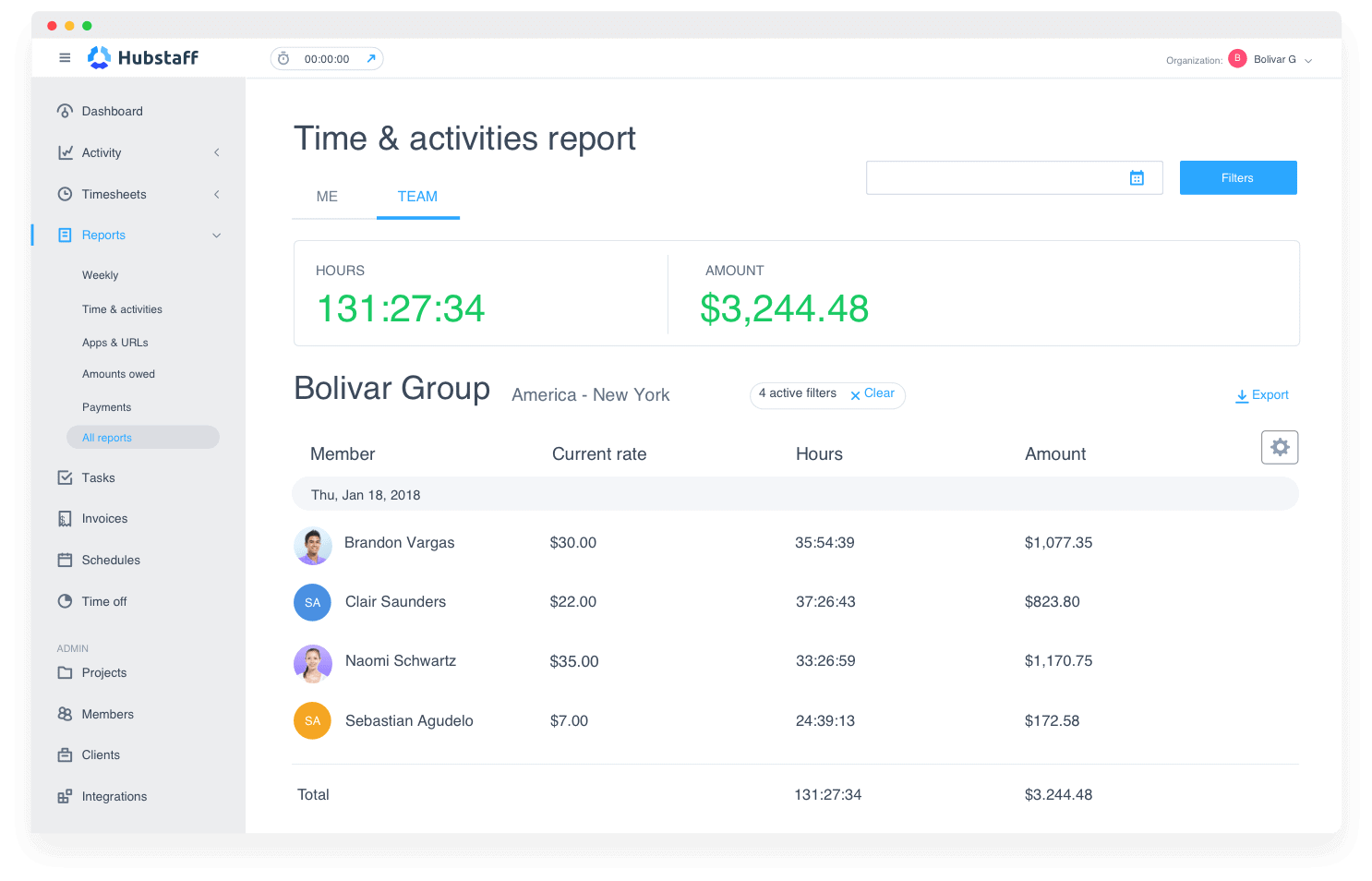You know what it’s like: you have a tight schedule and minimal room for mistakes, and an unforeseen delay derails your construction project.
This happens all too often. A 2015 survey by KMPG showed that only 25% of construction projects finished within 10% of their scheduled deadlines.
What’s more, a 2016 McKinsey report showed that large construction projects take 20% longer to finish than planned and, on average, run 80% over budget.
Issues with suppliers, problems with site surveys, adverse weather conditions, and even global virus pandemics are all potential causes of delays that can have serious consequences and implications for your project.
If you want to grow your construction company, you need to make sure that you avoid or minimize project delays and leave your clients satisfied with every project.
Let’s look at the different types of construction project delays and how you can overcome them.
The sooner you can spot delays, the more likely you are to be able to avoid them.
Boost your team’s efficiency with Hubstaff's productivity tools
Types of construction project delays
Most construction delays fall into one of these four categories:
1: Critical and non-Critical delays
Critical delays are your worst-case scenario. If you have a critical delay, it means that you’re not going to finish the build on time.
The only way to make up for a critical delay is to make cutbacks or changes to the project.
On the other hand, non-critical delays affect only aspects of the project, not the whole thing.
Unlike critical delays, you can make up for non-critical delays by investing more time or resources into the project.
You can understand more about critical delays by checking out our blog post on critical path management.
2: Concurrent delays
If you and your client both fall behind at the same time, that’s a concurrent delay. Sometimes scheduling issues on both sides are related to each other, but that’s not always the case.
For example, you may fall behind because you don’t have enough people on your team.

At the same time, your client might have issues with stage approval, applications, or permit processing.
The impact of concurrent delays can be different depending on the situation.
If the employer causes a delay, the contractor might be able to claim for an extension.
On the other hand, the employer can also claim liquidated damages if a delay is caused by the contractor.
Since these types of delays can be messy to resolve, it’s best to ask for legal advice before starting a project.
3: Compensable and non-compensable delays
Compensable and non-compensable construction delays have clear definitions:
- Compensable delays entitle the contractor to ask for additional time and payment
- Non-compensable delays entitle the contractor to ask for additional time only
The employer causes both of these types of delays.
For example, there might be a delay in receiving a site survey from the architect, which, in turn, delays construction work.
This type of delay is not the contractor’s fault. If something like this happens to you, you’re entitled to extend the project deadline at no additional cost.
Subscribe to the Hubstaff blog for more tips on managing field service teams
4: Excusable and Non-Excusable Delays
Excusable and non-excusable delays in construction are mostly clear-cut.
Excusable delays come from problems that are clearly out of your control. There’s nothing you could have done to prevent it from happening. These could be things like:
- Natural disasters
- Virus pandemics
- Weather conditions
- Delays due to changing specifications
Since the problem was obviously not your fault, you don’t usually need to compensate the client for the lost time.
Non-excusable delays, on the other hand, are delays that you could have avoided. These are related to:
- Poor performance
- Inadequate project planning
- Quality issues or delivery problems
- Delayed procurement
Usually, a non-excusable delay cuts into your profits.
When this type of delay happens, you’ll probably need to compensate your client by charging less or paying damages.
How to manage construction project delays
While construction project delays are often considered inevitable, a lot of them can be avoided or reduced.
Here are a few tips to help you avoid delays, as well as manage them in case they happen.
Plan and forecast projects better
Optimistic forecasting is a very straightforward way of making sure you’ll delay your project. While it may seem like an easy way to win a bid, forecasting unrealistically fast turnaround times will only result in problems down the line.
Instead of doing this, you should strive to forecast projects better.
A simple way to improve how you forecast project duration is to create a project activity checklist that outlines all the tasks that your team needs to finish to complete a project.
You’ll then add a time estimate for each activity and task on your list.
You can base these estimates off of the average time each task took you to complete in the past. If you need a way to track how much time tasks take, you can use a solution such as Hubstaff.

Add up the time estimates for all the tasks plus some additional time to serve as a buffer for unexpected delays.
Prevent construction project delays
Track time spent on projects and get project alerts with Hubstaff.
Spot potential delays early
Many construction project delays can be avoided — or at least minimized.
To be able to do this, you need to know how to spot the early warning signs of a project delay. The two most common of these signs include:
- Unclear or changing project scope: This is a major warning sign of a project delay. It’s usually a result of poor planning on the contractor’s part or the client not knowing what they really want.
- Communication problems: Lack of communication or poor communication between project managers, workers, and stakeholders is another major warning sign for a potential project delay. When it comes to construction projects, delays are bound to happen when communication breaks down.
Make sure to look out for these warning signs to avoid a project delay.
Improve communication
Poor communication can turn small problems into big delays. This makes it crucial that you work on improving communication between all parties involved in the project.
Workers, project managers, and stakeholders need to be easily reachable at all times.
You should also try to encourage daily reports and preliminary notices to keep everyone informed on the status of the project. This also helps you spot potential delays before they happen.
Stay hands-on until you catch up with the set schedule
If a delay does occur, you’ll want to stay hands-on until you catch up with the set schedule.
Start by determining the cause of the delay and then plan how to deal with it.
Try to include your team and the client when creating a plan for dealing with the delay.
Finally set aside any tasks that aren’t important and prioritize those that can cause a further delay if pushed back.
Have a backup plan
Having a backup plan is a great way to make sure you’re prepared in case a delay happens.

While you obviously can’t have a backup plan for every possible delay, you should have one for predictable and easily solvable delays.
An example of such a delay would be a supplier not being able to deliver materials. This is easy to fix — all you need is to have a backup supplier ready to go.
Minimize your construction project delays
Construction project delays are frustrating and expensive. They can also harm your company’s reputation.
A lot of delays happen due to factors outside of your control. However, some delays occur because you didn’t plan well enough.
Avoid these types of delays at all costs. In order to do this, you’ll need to:
- Plan and forecast projects better
- Spot potential delays early
- Improve communication between everyone involved in the project
- Have a backup plan prepared
In case a delay does occur, you’ll want to stay hands-on and manage the project personally until you catch up with the set schedule.
Most popular
The Fundamentals of Employee Goal Setting
Employee goal setting is crucial for reaching broader business goals, but a lot of us struggle to know where to start. American...
Data-Driven Productivity with Hubstaff Insights: Webinar Recap
In our recent webinar, the product team provided a deep overview of the Hubstaff Insights add-on, a powerful productivity measurem...
The Critical Role of Employee Monitoring and Workplace Security
Why do we need employee monitoring and workplace security? Companies had to adapt fast when the world shifted to remote work...
15 Ways to Use AI in the Workforce
Whether through AI-powered project management, strategic planning, or simply automating simple admin work, we’ve seen a dramatic...





